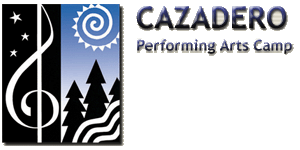Lesson Plan
36: Fungi
First posted June 24, 2004 Last
updated June 24, 2004
( Grade Level 9-12)

Remember these points from the Lesson
Plan Homepage:
(1) These lesson plans are not rigid requirements,
but a starting point for the Nature Counselor's
plan for teaching a particular day's experience.
(2) The activity should be fun and emphasize
active learning on the student's part: ask a
question, don't just state a fact.
(3) You should employ hands-on as much as possible.
(4) Plan each session to also allow time for
making entries in the Nature
Journal. |
Prior to the
session
(1) Review the section on the Fungi.
This lesson can be a lot of fun, as most students know
something about mushrooms, have seen them, and either
eaten them or refused adamantly to eat them!
(2) Be ready with examples from either the Nature Program
collection (dried mushrooms) or from around Cazadero.
Know where to find some of them, and plan where you
will stop for discussions and drawing. The dried mushrooms
are easily damaged, so try to keep them in reasonable
condition. I expect I will have to go to a Chinese grocery
store every year and get a new stock!
(3) The students should all know and write in their
books the facts in the final section (5).
Session
(1) Start with walking around camp, observing various
types of living things, especially if you have already
done the Five Kingdoms of Life. Be sure to have them
look at members of each of the kingdoms.
* Where does the Kingdom Fungi fit in? (No photosynthesis
like a plant, do not eat like an animal, but absorb
their food and typically live within the food.)
* Go over the Five Kingdoms.
* Have you ever seen types of fungi (mushrooms at
the store, mushrooms in a lawn or forest, shelf fungi
on rotting logs)
* Draw a mushroom.
* Place them on a tree of life diagram.
(2) Find an area where they will be comfortable and
yet have access to some examples.
* Examine the septae under the mushroom cap. What
are these for? (contain spores)
* You can usually get them involved with a discussion
of eating or hating to eat mushrooms.
* Discuss shelf fungi.
(3) Discuss how important fungi are.
* Saprophytic function: What would we do if nothing
ever rotted: fallen leaves, dead animals, falled trees?
* Mycorrhizael function: Fungi help roots to absorb
water and nutrients. Almost all plants depend on fungi
to help their roots.
* Draw a shelf fungus, esp if you have seen one.
(4) Discuss fungi in our lives other than mushrooms.
* Discuss cheese, beer, wine, ascorbic acid for citrus
colas, how they all involve fungi.
* Why would a farmer dry out his hay before storing
it? (prevents rotting by molds)
* Why would Indians dry meat and fish? (prevents rotting
by fungi and bacteria)
* What causes bread or donuts to rise? (yeast)
(5) Review how important fungi are:
* Fungi are mostly invisible, living underground
or within their food; the mushroom we see is only
the fruiting body
* Fungi are essential to the well-being of almost
all plants
* Fungi are essential to the recycling of nutrients
* Fungi make medicine: penicillin

References
Tom Volk's Fungi website it
a riot.
Back to the Lesson
Plan Homepage
|

